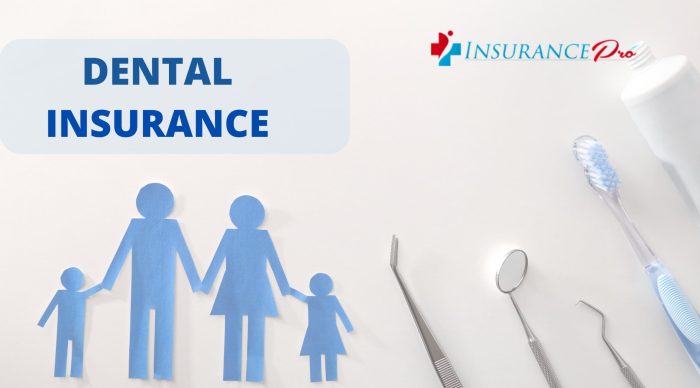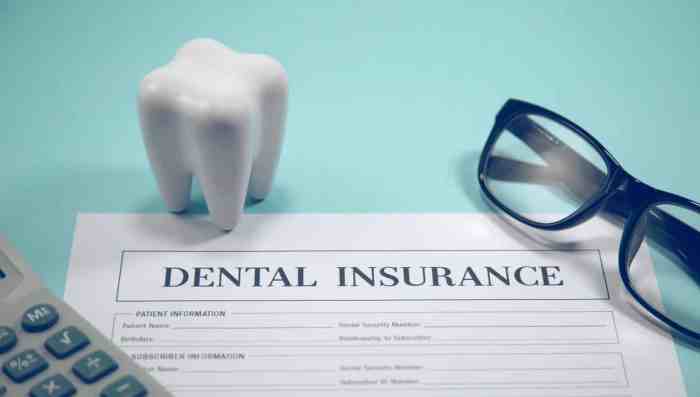Navigating the world of dental insurance can feel like deciphering a complex code. Understanding dental insurance premiums is crucial for securing affordable and comprehensive dental care. This guide unravels the intricacies of dental insurance premiums, exploring the factors that influence their cost, the details within policy documents, and strategies for finding the most suitable and cost-effective plan for your individual needs.
From the components that constitute your premium to the various factors affecting its price – including your age, location, and chosen plan type – we’ll provide a clear and concise explanation. We’ll also delve into the importance of preventative care, the nuances of in-network versus out-of-network providers, and how to effectively compare different plans to find the best fit for your budget and dental health goals.
Defining Dental Insurance Premiums
Dental insurance premiums represent the recurring payments you make to maintain your dental coverage. Understanding these premiums is crucial for making informed decisions about your oral healthcare. This section will break down the components, influencing factors, and calculation methods involved.
Your dental insurance premium is essentially the price you pay for the promise of financial protection against dental expenses. Several key components contribute to its final cost, all intricately interwoven to reflect the risk associated with providing you coverage.
Components of Dental Insurance Premiums
Several factors contribute to the overall cost of your dental insurance premium. These factors are carefully weighed by insurance providers to determine the appropriate price point for the coverage offered.
- Administrative Costs: These include the expenses associated with running the insurance company, such as salaries, technology, and marketing.
- Claims Processing Costs: The cost of processing and paying out claims filed by policyholders is a significant portion of the premium.
- Provider Network Costs: Negotiated rates with dentists and specialists within the insurance network influence the premium. A larger, more extensive network generally translates to a higher premium.
- Profit Margin: Insurance companies need to generate profit to remain sustainable. A portion of the premium covers this profit margin.
- Reserves: Insurance companies set aside funds as reserves to cover unexpected increases in claims or other unforeseen circumstances.
Factors Influencing Premium Variations
Dental insurance premiums vary significantly among different providers. Understanding these variations is crucial for selecting a plan that best fits your needs and budget.
- Plan Type: Different plans offer different levels of coverage (e.g., preventative care only, basic, comprehensive). Comprehensive plans, covering a wider range of services, typically have higher premiums.
- Geographic Location: Premiums can vary based on location due to differences in the cost of healthcare services and the prevalence of certain dental conditions in different areas.
- Age and Health Status: Older individuals or those with pre-existing dental conditions might face higher premiums due to a higher anticipated risk of claims.
- Individual vs. Group Plans: Group plans, offered through employers, often have lower premiums due to economies of scale and risk pooling.
- Deductibles and Co-pays: Plans with higher deductibles or co-pays may have lower premiums, as the policyholder assumes more of the upfront cost.
Premium Calculation and Risk Assessment
Insurance companies employ sophisticated actuarial models to calculate premiums. These models incorporate various risk assessment methodologies to predict the likelihood and cost of future claims.
The process involves analyzing historical claims data, demographic information, and trends in dental care costs. Statistical modeling techniques are used to estimate the expected cost of providing coverage to a specific group of individuals. The resulting premium is designed to cover expected claims, administrative expenses, and profit margins, while maintaining the financial stability of the insurance company. For example, a company might analyze data showing a higher incidence of cavities in a particular age group and adjust premiums accordingly for that demographic.
Factors Affecting Premium Costs

Dental insurance premiums, like other insurance costs, are influenced by a variety of factors. Understanding these factors can help you make informed decisions when choosing a plan that best suits your needs and budget. This section will explore the key elements that determine the cost of your dental insurance.
Demographic Factors and Premium Costs
Age, geographic location, and pre-existing health conditions significantly impact dental insurance premiums. Older individuals generally pay more due to a statistically higher likelihood of needing more extensive dental care. Location plays a role because the cost of dental services varies across regions; areas with higher costs of living often reflect higher premiums. Individuals with a history of significant dental issues may face higher premiums as insurers assess a greater risk of future claims. For example, someone with a history of periodontal disease might see a higher premium than someone with consistently excellent dental health.
Individual vs. Family Dental Insurance Premiums
Family dental plans typically cost more than individual plans. This is because a family plan covers multiple individuals, increasing the potential for claims. However, the cost per person in a family plan is often lower than the cost of individual plans for each member of the family. The exact cost difference varies depending on the insurer and the specific plan details. For instance, a family of four might find that a family plan is more cost-effective than purchasing four separate individual plans.
Plan Type and Premium Costs
The type of dental plan significantly influences premium costs. HMO (Health Maintenance Organization) plans usually have lower premiums but restrict you to a network of dentists. PPO (Preferred Provider Organization) plans generally have higher premiums but offer more flexibility in choosing dentists, though you’ll typically pay more out-of-pocket if you go outside the network. Finally, Dental Savings Plans offer discounts on services but don’t provide the same level of coverage as HMO or PPO plans, hence the lower premium cost.
Preventative Care and Premium Costs
Preventative care plays a crucial role in managing dental insurance premiums. Insurers often incentivize regular checkups and cleanings because early detection and prevention of dental problems are less expensive than treating significant issues later. Plans that emphasize preventative care may offer lower premiums or better coverage for these services. Conversely, individuals who neglect preventative care may see higher premiums in the future due to the increased likelihood of developing costly dental problems.
Comparison of Dental Plan Premiums
| Plan Type | Average Premium (Annual) | Annual Deductible | Out-of-Pocket Maximum |
|---|---|---|---|
| HMO | $500 | $50 | $1500 |
| PPO | $750 | $100 | $2500 |
| Dental Savings Plan | $100 | N/A | N/A |
| EPO (Exclusive Provider Organization) | $600 | $75 | $2000 |
*Note: These are example figures and actual premiums will vary depending on the insurer, location, and specific plan details.*
Finding Affordable Dental Insurance

Securing affordable dental insurance can significantly impact your oral health and overall well-being. High dental costs can deter regular checkups and necessary treatments, leading to more expensive problems down the line. Fortunately, several strategies and resources can help you find a plan that fits your budget.
Finding the right dental insurance plan requires careful consideration of your needs and available options. Understanding the factors influencing premium costs, as discussed previously, is crucial in this process. By employing a strategic approach and utilizing available resources, you can increase your chances of finding affordable coverage.
Strategies for Finding Affordable Dental Insurance
Several methods can help individuals find affordable dental insurance. These strategies involve exploring various plan types, comparing prices, and considering additional cost-saving measures.
- Compare plans from multiple insurers: Don’t settle for the first plan you find. Shop around and compare quotes from different insurance providers to find the best value for your money. Consider factors like coverage limits, annual maximums, and deductibles.
- Consider a high-deductible plan with a low premium: If you are generally healthy and rarely need extensive dental work, a high-deductible plan with a lower monthly premium might be a cost-effective option. You will pay more upfront, but your monthly costs will be lower.
- Explore dental discount plans: These plans offer reduced rates on dental services but do not provide the same comprehensive coverage as traditional insurance. They are a good option for those who need basic dental care and want to save money.
- Negotiate with your dentist: Some dentists offer payment plans or discounts for cash payments. It’s worth asking your dentist about their payment options to see if you can reduce your out-of-pocket expenses.
The Role of Government Subsidies and Employer-Sponsored Plans
Government subsidies and employer-sponsored plans play a vital role in making dental insurance more accessible and affordable. These programs often reduce the financial burden associated with dental care.
Government programs, while varying by location and eligibility requirements, can offer financial assistance to individuals and families who qualify. For example, Medicaid in the United States provides dental coverage for low-income individuals and children. Similarly, many countries have national health programs that include dental benefits.
Employer-sponsored dental insurance plans are a common way for employees to obtain affordable coverage. Many companies offer dental insurance as part of their benefits packages, often at a reduced cost to the employee compared to purchasing individual plans. The employer may contribute a portion of the premium, making it even more affordable.
Resources for Researching and Comparing Dental Insurance Plans
Several resources can assist individuals in researching and comparing dental insurance plans to find the most suitable and cost-effective option. These tools can streamline the process and ensure you make an informed decision.
Many online comparison websites allow you to input your requirements and preferences to view plans that meet your criteria. These websites often provide detailed information on coverage, premiums, and deductibles, allowing for a side-by-side comparison. Additionally, your state’s insurance marketplace or government websites may offer information on available plans and programs. Finally, consulting with an insurance broker can provide personalized guidance and recommendations based on your individual needs and budget.
Wrap-Up

Securing adequate dental insurance requires careful consideration of various factors. By understanding the components of your dental insurance premium, the influence of demographic details and plan types, and the importance of policy details, you can make informed decisions. Remember to thoroughly compare plans, considering both premiums and out-of-pocket costs, to find the optimal balance between affordability and comprehensive coverage. Prioritizing preventative care can also contribute significantly to long-term cost savings.
General Inquiries
What happens if I exceed my annual maximum?
Once you reach your annual maximum, your insurance coverage for that year is typically exhausted. You would be responsible for any further dental expenses.
Can I change my dental insurance plan during the year?
The ability to change plans mid-year depends on your insurer and the specific policy terms. Some insurers allow changes only during open enrollment periods.
What is a waiting period for dental insurance?
Many plans have waiting periods, typically ranging from a few months to a year, before certain services, such as orthodontics or major procedures, are fully covered.
How do I file a claim with my dental insurance provider?
The claims process varies by provider. Generally, you’ll need to submit a claim form along with receipts and other relevant documentation. Contact your insurer for specific instructions.